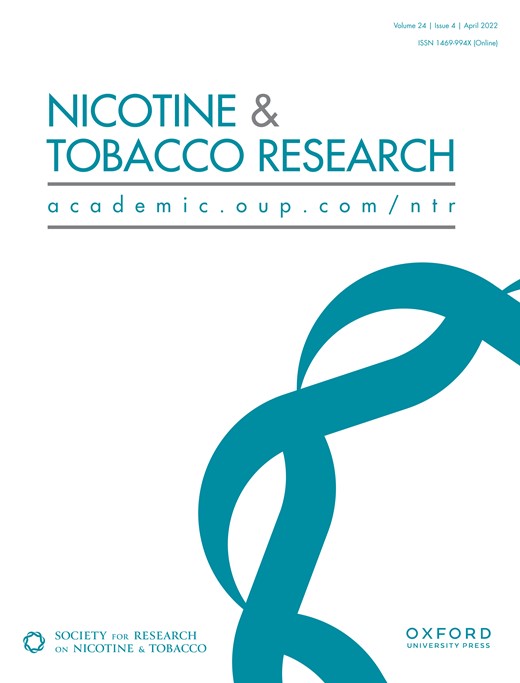-
Views
-
Cite
Cite
Marie-Pierre Sylvestre, Béatrice Lauzon, Erika N Dugas, Miceline Mesidor, Jennifer L O’Loughlin, Cigarette Smoking Trajectories in Adolescent Smokers: Does the Time Axis Metric Matter?, Nicotine & Tobacco Research, Volume 24, Issue 4, April 2022, Pages 598–605, https://doi.org/10.1093/ntr/ntab170
Close - Share Icon Share
Abstract
Most studies modeling adolescent cigarette smoking trajectories use age as the time axis, possibly obscuring depiction of the natural course of cigarette smoking. We used a simulated example and real data to contrast smoking trajectories obtained from models that used time since smoking onset or calendar time (age) as the time axis.
Data were drawn from a longitudinal investigation of 1293 grade 7 students (mean age 12.8 years) recruited from 10 high schools in Montreal, Canada in 1999–2000, who were followed into young adulthood. Cigarette consumption was measured every 3 months during high school, and again at mean ages 20.4 and 24.0. Analyses using time since onset of smoking as the time metric was restricted to 307 incident smokers; analysis using calendar time included 645 prevalent and incident smokers. Smoking status and nicotine dependence (ND) were assessed at mean ages 20.4 and 24.0. Simulated data mimicked the real study during high school.
Use of different time metrics resulted in different numbers and shapes of trajectories in the simulated and real datasets. Participants in the calendar time analyses reported more ND in young adulthood, reflecting inclusion of 388 prevalent smokers who had smoked for longer durations.
Choosing the right time metric for trajectory analysis should be balanced against research intent. Trajectory analyses using the time since onset metric depict the natural course of smoking in incident smokers. Those using calendar time offer a snapshot of smoking across ages during a given time period.
This study uses simulated and real data to show that trajectory analyses of cigarette smoking that use calendar time (e.g., age) versus time since onset as the time axis metric tell a different story. Trajectory analyses using the time since onset metric depict the natural course of smoking in incident smokers. Those using calendar time offer a snapshot of smoking across ages during a given time period. Choosing the right time metric should be balanced against research intent.






Comments